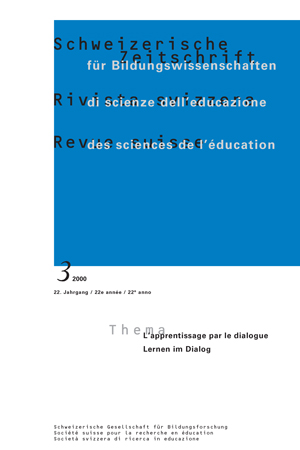Learning in dialogue – Description and analysis of student dialogues during the solving of a problem in a learning dyad
DOI:
https://doi.org/10.24452/sjer.22.3.4589Abstract
The following study examined dialogues in which two students tried to solve a problem together without the help of a steering and correcting teacher. The goal, to answer an everyday question such as, “Why does an iron boat float?” leads the way to the solution of a physical problem. The study-partners experiences, solution ideas, and questions in the discussion about the proposed subject, make up the fruitfulness of such a situation. In a representative study with over 400 male and female students of 20 eight-grade classes, such dialogues to a physical and rather linguistical problem area where examined. The aim here was to analyze the paradigms that contribute to a more or less enhancement of learning throughout the dialogues. As an example, it was possible to prove the gender-specific differences and the significance of pre-existing knowledge.
A smaller spot-test of 31 dialogue-couples scrutinizes their conversations. The results show, among other things, that for the solution of a linguistical problem, the capability to steer matters, where with the natural-science task, the diversity of pre-existing knowledge and “creative straying” is helpful. From that, we can deduce conclusions for co-operative learning and the didactic meaning of study-partnerships. The significance of dialogues can as well be thematically examined in present school lessons.
Downloads
Downloads
Published
Issue
Section
License

This work is licensed under a Creative Commons Attribution 4.0 International License.



